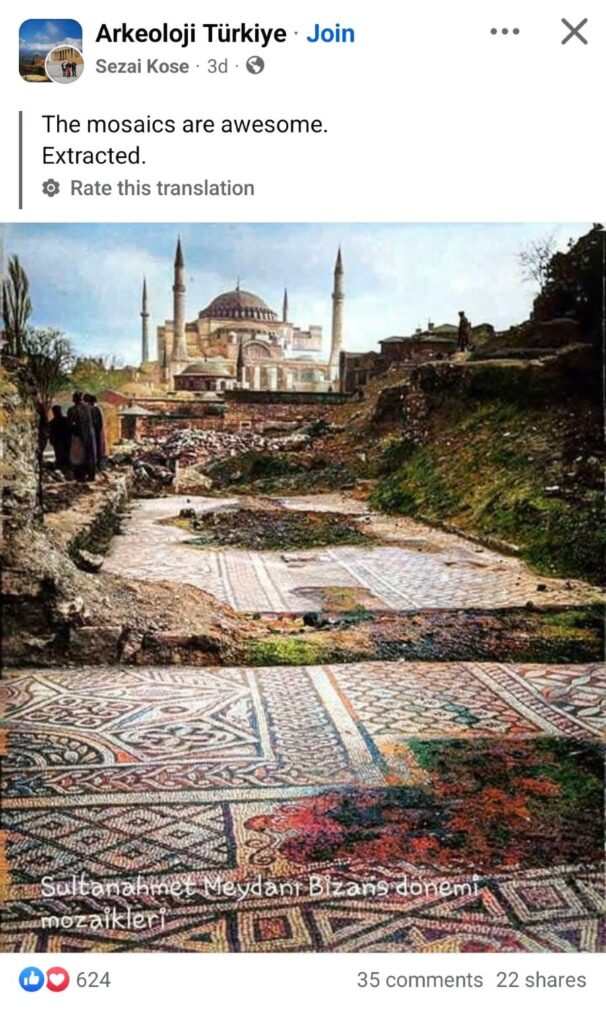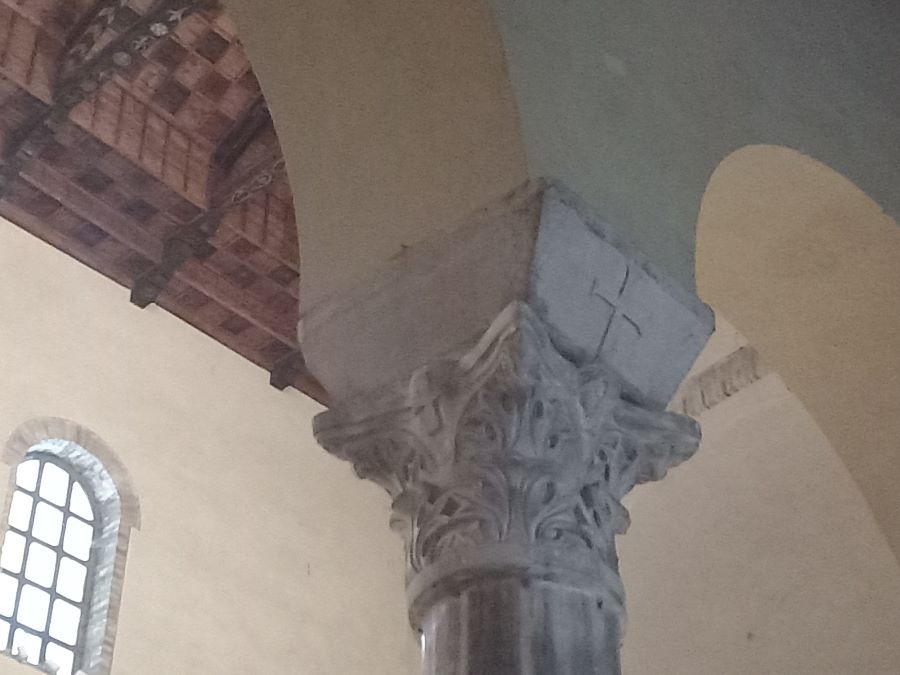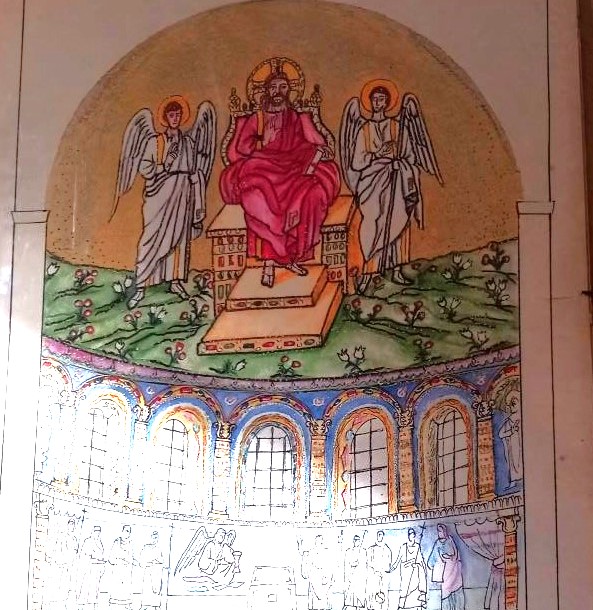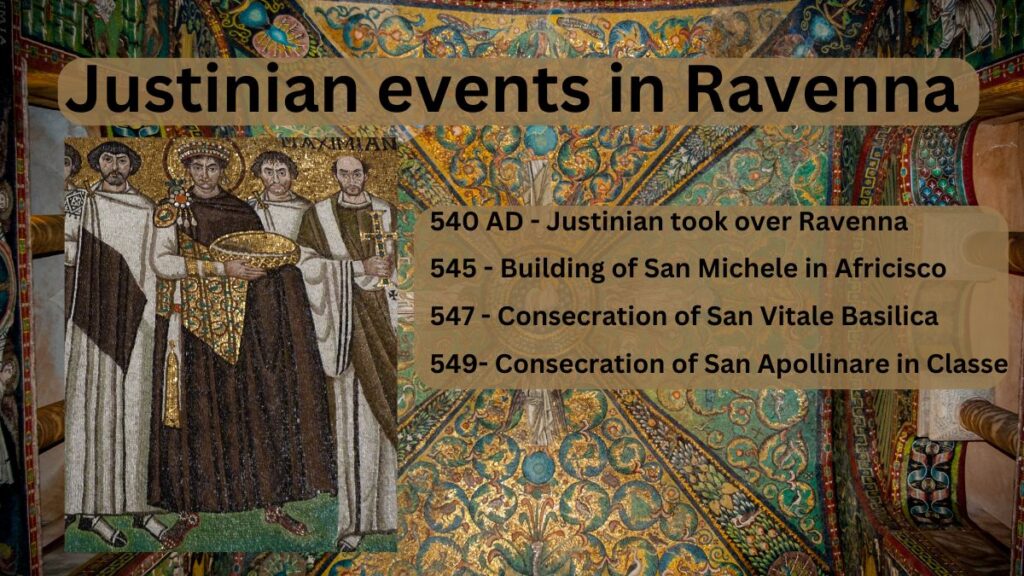- How to Tour Ravenna’s three Byzantine periods Chronologically
- Observing the Contrast of Byzantine Istanbul and Ravenna
- Forgotten Byzantine gems in Ravenna
- Shipped Ancient Monuments in Ravenna from Istanbul
A visit to both places that host Byzantine history will give you a new perspective. At a concert in a historic church in Ravenna, an Italian man said that when he visited Istanbul, he saw more destruction compared to Ravenna. What did he mean by these words? Let’s dig into the details of how these two Byzantine capitals differ.
Byzantine History in Churches
Istanbul has multiple Byzantine churches such as Hagia Sophia, St. Irene and former churches that are now mosques. Of the 18 churches listed online, only one (St. Mary of the Mongols) remains a church today, and one (St. Irene) remains a museum.[1]https://en.wikipedia.org/wiki/List_of_Byzantine_monuments_in_Istanbul The massive number of former church buildings converted into mosques dominated history, while many other buildings were destroyed.
However, in Ravenna, the church scene is quite different. Istanbul is the mother of Byzantine history and influenced the Western capital of the Roman empire when Ravenna became the center (starting in 402 AD). A good number of former Byzantine churches still function as churches today. Enjoy a concert at San Francesco, visit an orthodox service at Santo Spirito, or visit the St. Agatha Catholic church—all provide evidence of activity today. The numerous churches from the 5th and 6th centuries profoundly influenced tourists as to this possibly.
Ravenna the City of Byzantine Mosaics
Istanbul’s historical Byzantine period has been transformed into an Islamic space. For this reason, the former Byzantine churches are often ignored. However, the mosaics in both locations show the difference.

Istanbul was a City of Mosaics, but now, these mosaics are suppressed. On the FB pic on the left, the Byzantine palace displays mosaics of unfathomable beauty, but these excavations started in 1921, and still no museum or items were displayed.[2] https://en.wikipedia.org/wiki/Great_Palace_of_Constantinople
The palace site has tourist walkways and gates around it, but they have never been opened to the public. Now, weeds and decay again dominate the scene.
Walking through historical sites in Turkiye, I often feel the lack of information concerning any mosaics on display. The write-ups will say they are Roman mosaics and ignore any religious references. Yet, in Ravenna, having a church means having mosaics. The floors of Byzantine buildings with calculation display mosaics to provoke thought. The walls and apse provoke respect and honor to either the Lord himself or past servants. In Istanbul, mosaics are only a hint of what Ravenna has.
Ravenna, Byzantine on Display – Istanbul Nostalgic
At the International church in Istanbul, a visitor from America living in Pakistan came. He said he visited the Hagia Sophia and was quite disturbed and angry. He continually felt the desecration of the place since it was a church previously. The Turkish author Orhan Pamuk said, “Books, which we mistake for consolation, only add depth to our sorrow. ” Yet, for the Christian observant, the consolation of the Byzantine history in Istanbul only adds depth to the Christian’s loss. Much like Danti Alighieri, who lived in Ravenna said in Inferno, “No greater grief than to remember days of joy, when mis’ry is at hand.” For those who have seen better church scenes, the Istanbul nostalgic perspective begs further despair.
Imaginary Istanbul
What did some of the martyrion look like in Istanbul? For instance, rocks pile up, and the octagon flooring west of the Hippodrome displays what was the St. Euphemia martyrion. Looking at a place like Galla Placidia Mausoleum gives insight into how some of these places appeared. Here is a tour of that location in Ravenna.
Patterns on Display in Byzantine History
One of the most fascinating things about Ravenna is the religious patterns that came from the former Constantinople. The mosaics, cross patterns, capitals and graves all display the 5th-6th century Byzantine pattern.

This cross at the Basilica of San Francesco lies above the capital and repeats in multiple churches, hinting at an honorable meaning to the numerous ruined cross monuments around Istanbul.
In the St. Agatha Church in Ravenna, the former 6th-century mosaic on the apse is displayed on the wall. Christ on the throne is still displayed for the Muslim worshipers at Hagia Sophia on the lower level. The scene is similar: The Word of God is in hand, and Jesus is centered between angels or royalty. See my write-up about this.

Amazingly, Justinian had time to fortify his western capital. The Persians were knocking on the door in the East, and the Goths were on the Italian peninsula. Meanwhile, in 542, the Bubonic plague appeared in Constantinople. Despite all these challenges, the image below shows some of his accomplishments related to Ravenna.

A trip to either city will benefit someone interested in Byzantine history. Ravenna’s unashamed display of its history will overshadow its mother city, Istanbul. The city of Ravenna displays a glimpse into the 6th-century Byzantine, which is only dormant in Istanbul.
Have you visited there? Please let me know what you think.
I enjoy contrasting and observing differences; please check out my books on Islam and marriage.
Leave a Reply